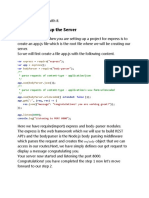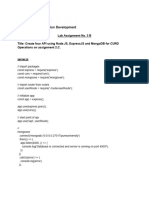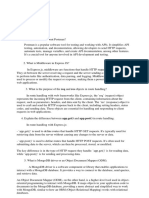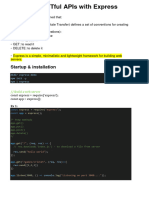0% found this document useful (0 votes)
11 views13 pagesCRUD Functionality
This document is a comprehensive beginner's guide to building CRUD (Create, Read, Update, Delete) applications using Node.js and Express. It explains the basic concepts of CRUD, outlines the necessary prerequisites, and provides step-by-step instructions for setting up a project, creating routes, controllers, and middleware for user management. Additionally, it covers testing the application, common mistakes, advanced tips, and offers resources for further learning.
Uploaded by
tanmaykumar18102002Copyright
© © All Rights Reserved
We take content rights seriously. If you suspect this is your content, claim it here.
Available Formats
Download as PDF, TXT or read online on Scribd
0% found this document useful (0 votes)
11 views13 pagesCRUD Functionality
This document is a comprehensive beginner's guide to building CRUD (Create, Read, Update, Delete) applications using Node.js and Express. It explains the basic concepts of CRUD, outlines the necessary prerequisites, and provides step-by-step instructions for setting up a project, creating routes, controllers, and middleware for user management. Additionally, it covers testing the application, common mistakes, advanced tips, and offers resources for further learning.
Uploaded by
tanmaykumar18102002Copyright
© © All Rights Reserved
We take content rights seriously. If you suspect this is your content, claim it here.
Available Formats
Download as PDF, TXT or read online on Scribd
/ 13


























































































